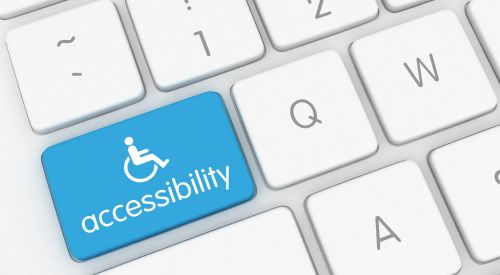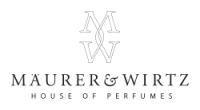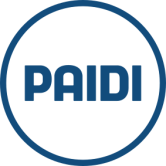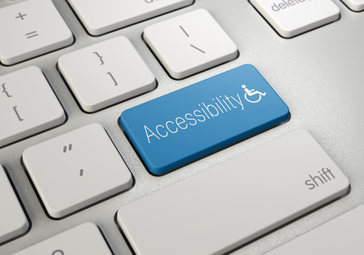Increase the reach of your digital offerings by including people with disabilities.
Accessible websites and online stores are now mandatory internationally
For companies operating in the EU, it's crucial to comply with international digital accessibility requirements, both to ensure legal compliance and to offer an inclusive user experience. International standards, such as WCAG 2.1 and European Accessibility Act (EAA), set clear requirements for how websites and digital solutions should be accessible to people with disabilities.
Complying with these requirements is not only a legal obligation, but also an investment in the future of your business. Lack of accessibility can lead to:
-
Fines and legal implications: Legislation at both EU and national level requires businesses to ensure digital accessibility. Companies that fail to meet these requirements risk fines and potential litigation.
-
Customer loss: Around 15-20% of the world's population live with some kind of disability, which means that many potential customers will have a hard time accessing your website if it is not accessible. An inaccessible website can lead to lost sales and a poor reputation.
-
Improved user experience: Accessibility is not only important for people with disabilities — many of the same techniques improve the user experience for everyone. For example, more intuitive navigation and improved readability can benefit both regular users and those with specific needs.

Benefits of accessible websites and online stores
In addition to legal security, designing your website to be accessible provides additional benefits:
Expansion of the target group
Improved user-friendliness
Many digitally accessible design principles improve the overall user experience for all visitors.
SEO benefits
Accessible websites and online shops are often more search engine friendly, which can lead to better rankings in Google.
Positive brand perception
Demonstrate social responsibility and strengthen your brand.
How we as specialists can help you
As digital accessibility specialists, we have the experience and knowledge to help Danish companies optimize their digital solutions in accordance with international requirements.
For international businesses, ensuring digital accessibility is no longer an option, but a necessity. We help you navigate the complex requirements and optimize your digital presence to ensure both regulatory compliance and a better user experience.
As experts, we can guide you through the process and ensure you not only meet legal requirements, but also create a digital experience that is accessible to all.
We offer the following services:
Partnership with Eye-Able®

To implement digital accessibility in a holistic way, we collaborate with software provider Eye-Able®. The tools make it possible to make websites more accessible in a simple and fast way - through features such as contrast adjustment, text magnification, reading aloud function and many other individually adjustable aids.
Through our partnership with Eye-Able®, we can offer our customers even better support on the road to an inclusive website.
What does web accessibility mean?
Web accessibility means that websites and digital solutions are designed and developed in a way that all people, regardless of their ability or disability, can use and understand them. It's about ensuring that all users, including people with visual, hearing, motor or cognitive disabilities, have equal access to online content and services.
- Perceptibility
- Usability
- Comprehensibility
- Robustness
Web content must be perceivable by all users, including those with visual or hearing impairments. This means that text must be readable, images must have text descriptions (alt text), and video content must have subtitles or transcripts.
The website should be usable by everyone. This means that all functions and interactive elements (such as buttons, forms, and links) must be operable via keyboard or alternative input methods, not just by mouse.
Web content should be clear and understandable. Users should be able to navigate easily and content should be precise and easy to understand, especially for people with cognitive challenges. This includes a logical structure and the use of easy-to-understand language.
Content must be robust enough to be interpreted by a wide range of users, including those who rely on assistive technology. This means that websites must be compatible with current and future technologies.
Packages and prices
- Selection of test sites
- Analysis of 5 sub-sites in accordance with EN 301 549 V.3.2.1*
- Short report including results protocol
- * additional subpages from €360
- Selection of test sites
- Analysis of 5 sub-sites in accordance with EN 301 549 V.3.2.1*
- Documentation & description of deficiencies, including results report
- Recommendations for action & next steps
- * additional subpages from €600
- Selection of test pages
- Analysis of 5 sub-sites in accordance with EN 301 549 V.3.2.1*
- Documentation & description of deficiencies, including results report
- Recommendations for action & next steps
- Workshop to present the results
- Example of accessibility statement
- *additional subpages from €600
Our references
Our team is looking forward to answering your questions!
The iMi team of around 100 colleagues embodies the spirit of ‘Made in Germany’. Out of conviction, we deliberately avoid using freelancers or outsourcing programming abroad in order to guarantee our customers the highest quality. The employees of our digital agency are certified in Scrum, Magento, Shopware, Google Analytics and Hootsuite, among others. With almost 2,000 hours of training and courses per year, we ensure that we are always up-to-date and advance our customer projects with new ideas and innovative approaches.
Register now for one of our free iMi online seminars!
FAQ - Frequently asked questions about digital accessible websites and online stores
What does web accessibility mean?
Web accessibility means that a website or web application is designed so that all users - regardless of disability - can access and use it. This includes people with visual, hearing, motor or cognitive challenges.
Why is web accessibility important?
Web accessibility is important because it ensures that all people, regardless of ability, can access information and services online. It improves the user experience and is a legal requirement in many countries, including the EU and US, for both public and private websites.
What is WCAG 2.1?
WCAG 2.1 (Web Content Accessibility Guidelines) is a set of guidelines that set standards for making web content more accessible to people with disabilities. These guidelines cover areas such as visibility, navigation and interactivity and help meet web accessibility requirements.
As an agency, do you offer software solutions for accessible websites and webshops?
We do not develop accessibility solutions ourselves, but collaborate with software provider Eye-Able®, whose tools complement our services perfectly.
Is having an accessible website required by law?
Yes, in many countries, including all of the European Union, it is a legal requirement for public authorities and organizations to ensure that their websites and applications are accessible to everyone. Private companies, especially those operating internationally, may also be required to comply with accessibility requirements.
What standards exist for web accessibility?
WCAG (Web Content Accessibility Guidelines) is an international standard for improving the accessibility of web content. It originates from the Web Accessibility Initiative (WAI) of the World Wide Web Consortium (W3C), an international community that develops standards for the World Wide Web.
Barrierefreie-Informationstechnik-Verordnung (BITV 2.0) is based on WCAG and defines specific requirements for accessible websites and mobile applications. The BITV 2.0 test is used to check the WCAG standards.
Who is obligated to make their website accessible?
Public institutions such as federal, regional and municipal authorities, universities, schools and libraries are already required to comply with the EU Accessibility Directive 2016/2102 according to EN 301 459.
Since June 2025, extended requirements for the accessibility of web offerings from the private sector apply in Germany through the Act on Strengthening Accessibility (BFSG). These are set through the implementation of EU Directive 2019/882 on accessibility requirements for products and services, the European Accessibility Act (EAA). This applies to companies that sell products and services to end users. In addition to online stores, this also applies, for example, to appointment booking forms via a website.
Excluded are service companies with fewer than ten employees and an annual turnover or annual balance sheet of no more than €2 million. For companies whose products are covered by the BFSG, there are no exemptions.
What should affected website and store operators be aware of?
Website operators must ensure that their offerings meet the accessibility requirements according to the WCAG standards. In addition, they must make available an accessibility statement that provides users with information about the accessibility of their website and about feedback mechanisms.
How do I make my website accessible?
Accessibility measures include proven design and development methods that ensure websites are accessible to all users. This includes, for example, the provision of alternative text for images and graphics, proper heading markup, a clear navigation structure and sufficient contrast. Compliance with the requirements is checked in Germany using the BITV test.
Barrier-free overlays or plugins are not a sufficient solution as they do not solve fundamental problems in the code and design and therefore do not meet the legal requirements.
Who benefits from accessible websites and webshops?
Barrier-free websites and online stores offer many benefits to a wide range of users. People with disabilities, such as visual and hearing impairments, motor limitations or cognitive disabilities, particularly benefit as they can better perceive content and navigate the site. Also, older people who may have age-related limitations find such web offers more user-friendly. In addition, people with temporary disabilities, such as an injury, as well as mobile users browsing in different conditions, such as bright sunlight, benefit from a barrier-free design. Non-native speakers also appreciate clear and simple language.






